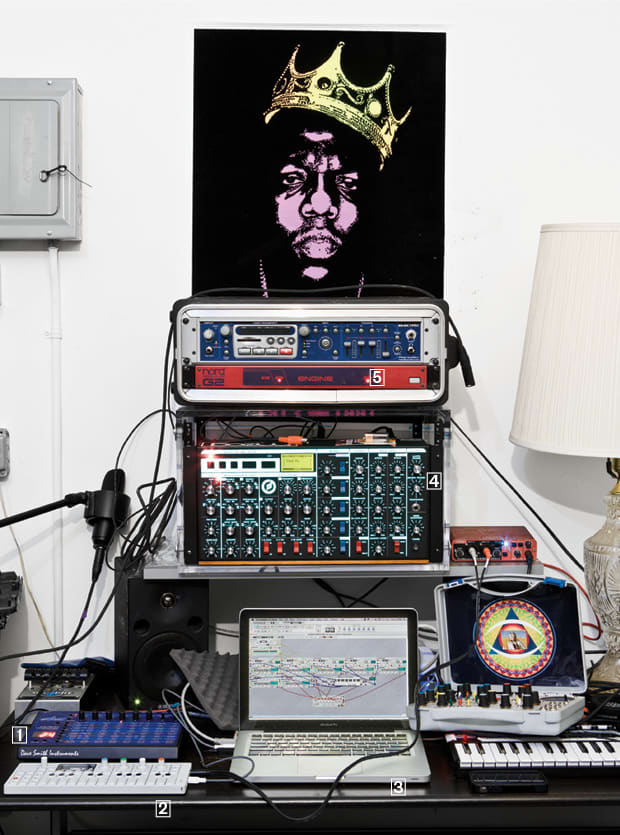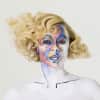When Amanda Warner was 10 years old, her dad taught her how to record on a reel-to-reel four-track in the basement of their North Dakota farmhouse. After studying chemistry and music in college, Warner bought a Nord Micro Modular, one of the first programmable synths, and began making minimal techno as MNDR while living in California. A pop songwriting deal with a publishing company brought her to New York and Warner found some success as a solo artist after Mark Ronson recruited her to sing the hook on his song “Bang Bang Bang” in 2010. After touring with Ronson, Warner returned to collecting and customizing synths, keyboards and drum machines and readied her shimmering debut, Feed Me Diamonds. We visited her studio to get a rundown of all the equipment in her studio and a lesson in what you need to be a true gearhead.
1. The Black Box: Dave Smith Mono Evolver
Dave Smith is a genius and all his gear is legendary. He founded [pioneering synthesizer company Sequential Circuits and made the Prophet-5 and Prophet VS. Nerdy IDM people love Dave Smith. This synth is not for the faint of heart, it’s a little involved.
2. One Stop Shop: Teenage Engineering OP-1
This is probably the coolest piece of gear I’ve ever seen. You can make an entire song on this and then record it on vinyl and DJ with it. You can sample radio frequency and make keyboard sounds on it, then you have tons of envelopes. You can boost different parts of envelopes and resonate different frequencies. I used it on the album for “Stay” and “Bombs Away.”
3. The Powerhouse: Macbook Pro
This has the most intense version of Ableton. For my live show, I’m running eight lines of audio out, plus Ableton is sequencing my light show with the projector and my gear, which has a separate light show. I have Ableton driving everything.
4. The Holy Grail: Moog Voyager
This has made such a difference in my live show and my records. It’s been a very defining synth. Every patch [a sound setting] in there is custom.
5. Mighty Morph: Nord Modular Rack and G2 Engine
It has a virtual module deck and you can just take from basic components, like the wave tables you want to use, the envelopes and the filters. So it’s analog modeling, plus you can do a bit more stuff with it.

